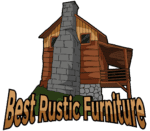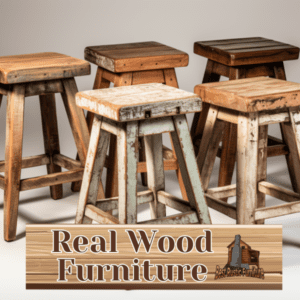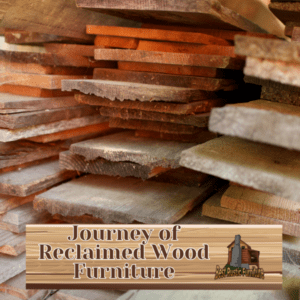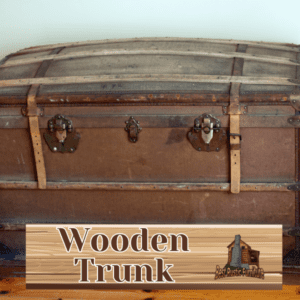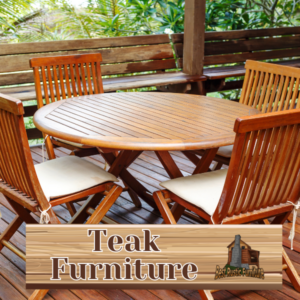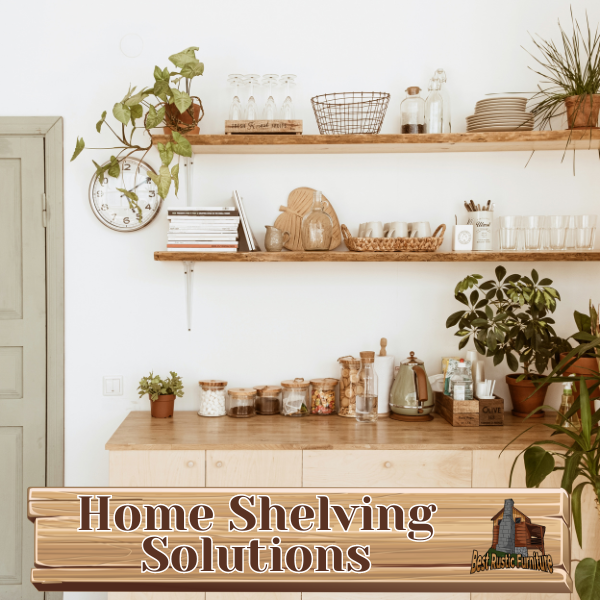
Home shelving solutions provide essential storage and organization options for every room in your house. From wall-mounted shelving to freestanding options, corner shelving, floating shelves, and built-in shelving, the variety of choices can help maximize space and enhance the aesthetics of your home.
When considering home shelving solutions, it’s important to assess your storage needs, considering factors such as the amount of items you need to store and the specific items you want to display or keep within easy reach. Evaluating the style and aesthetics of your space is crucial to ensure the shelving complements the overall design theme of your home. Measuring your space accurately helps in selecting the right size and dimensions of shelving units.
One key decision to make is whether to opt for DIY shelving or pre-made shelving options. Each has its own pros and cons. DIY shelving allows for customization and can be a cost-effective solution, but it requires more effort and tools for installation. On the other hand, pre-made shelving offers convenience and is often designed with durability and functionality in mind, but it may have limitations in terms of customization. Installation and maintenance are important considerations for home shelving solutions.
Proper installation techniques for wall-mounted shelving and assembling freestanding shelving are essential to ensure the shelves are secure and safe to use. Regular maintenance and cleaning of the shelves help keep them in optimal condition and prevent debris or clutter from accumulating. To optimize the use of your home shelving, organizing strategies can be employed. Categorizing and grouping items, utilizing storage bins and containers, and labeling and arranging items strategically can make it easier to find and access your belongings. By considering these aspects, you can find the right home shelving solutions that meet your needs, enhance the functionality and aesthetics of your space, and provide effective storage and organization options for your home. https://www.youtube.com/embed/ho5bc6Auzgg
Types of Home Shelving
When it comes to organizing and maximizing space in our homes, the right shelving solutions can make all the difference. In this section, we’ll explore the various types of home shelving options available. From versatile wall-mounted shelves to practical freestanding units, and even clever corner and floating shelves, we’ll cover a wide range of choices. We’ll delve into the benefits and functionalities that each type of shelving offers, helping you to find the perfect fit for your home. Let’s dive in!
1. Wall-Mounted Shelving
When it comes to organizing your home, wall-mounted shelving is a versatile and space-saving solution. There are a few key points to keep in mind when choosing and using wall-mounted shelves:
- 1. Stability: It’s important to ensure that your wall-mounted shelving is securely attached to the wall, preferably on studs. This will help prevent accidents or any damage.
- 2. Weight Capacity: Before you start placing items on your shelves, determine their weight capacity. It’s crucial to make sure they can safely hold everything you want to display or store.
- 3. Material and Style: Wall-mounted shelves come in various materials and styles. To seamlessly blend them with your decor and meet your needs, you can choose from options like wood, metal, glass, or even floating shelves.
- 4. Accessibility: Consider the height and placement of your shelves to ensure easy access to your items. It’s important to position them in a way that makes retrieving or organizing belongings hassle-free.
- 5. Organization: Take advantage of wall-mounted shelving to display decorative items, store books, or create a functional workspace. They offer a great way to keep your belongings organized and within reach.
2. Freestanding Shelving
Freestanding shelving provides versatility and convenience for efficiently organizing your space. When selecting freestanding shelving, consider the following factors:
- Style and Functionality: Choose shelving that complements your decor and fulfills your storage requirements. Look for adjustable shelves to maximize flexibility.
- Material: Opt for durable and stable materials like wood or metal.
- Size and Dimensions: Take accurate measurements of your space and select shelving that fits without obstructing movement.
- Weight Capacity: Consider the weight of the items you intend to store and ensure that the shelving can support the load.
- Assembly: Check if the shelving requires assembly and evaluate your DIY abilities or opt for pre-assembled options.
When organizing your freestanding shelving, categorize your items, utilize storage bins or containers, and strategically label and arrange your items for convenient access.
3. Corner Shelving
Corner shelving is the ideal choice for optimizing your storage space and making the most of unused corners in your home. When it comes to incorporating corner shelving, here are a few important factors to keep in mind:
- Functionality: It’s important to determine how you’ll be using the corner shelves, whether it’s for displaying decorative items, storing books, or organizing kitchen supplies.
- Space utilization: Corner shelves are perfect for making efficient use of tight spaces and can be customized to fit the specific dimensions of your corner.
- Style and design: When choosing corner shelving, make sure it complements your existing décor and aligns with your personal style.
- Material and durability: Consider the materials used for the shelves, such as wood, metal, or glass, to ensure they are sturdy and built to last.
- Installation: You have the option to choose between ready-made corner shelves or go for custom-built ones. It’s crucial to ensure proper installation for maximum stability.
By carefully considering these factors, you will be able to create a functional and visually appealing solution with corner shelving for your home.
4. Floating Shelves
Floating shelves are a popular choice for home shelving due to their sleek and minimalist design. They are versatile, easy to install, and can be used in any room of the house. Here are some key points to consider when using floating shelves:
- Design: Floating shelves provide a modern and clean look to any space.
- Space-saving: They don’t take up floor space, making them ideal for small rooms or tight corners.
- Decorative elements: Use floating shelves to display decorative items, such as plants, picture frames, or books.
- Installation: Ensure proper installation by following the manufacturer’s guidelines and using appropriate hardware.
Pro tip: To create a visually appealing arrangement, vary the heights and spacing between floating shelves to add visual interest to your wall.
5. Built-in Shelving
Built-in shelving provides a seamless and customized storage solution for any room in your home. When incorporating built-in shelving, there are several key considerations to keep in mind:
- Functionality: Start by assessing your storage needs and determining which items you want to keep on the shelves.
- Space utilization: Maximize your wall space by opting for built-in shelves, which allow for efficient organization and utilization of the available area.
- Aesthetics: Take into account the style and design of your space to ensure that the built-in shelves complement the overall look and feel.
- Materials: It is crucial to choose high-quality materials that not only match your decor but also guarantee durability for long-lasting shelving.
- Professional installation: For a polished and professional finish, consider hiring an expert to install the built-in shelving system.
By incorporating these considerations, you can create functional and visually appealing built-in shelving that perfectly fits your storage needs.
Finding the Right Shelving for Your Space
Are you struggling to find the perfect shelving solution for your home? Look no further! In this section, we will guide you through the process of finding the right shelving to fit your space. From assessing your storage needs to considering the style and aesthetics, we have got you covered. We will also delve into the importance of measuring your space accurately to ensure a seamless fit. Get ready to transform your home with the ideal shelving solution for your needs!
1. Assessing Your Storage Needs
- To find the right home shelving solutions, it is crucial to start by assessing your storage needs. This can be done in three simple steps:
- Take inventory: Begin by evaluating the items you need to store. Categorize them based on their size and frequency of use.
- Evaluate space: Measure the available space in the room where you plan to install the shelves. Consider any limitations, such as obstructions or uneven walls.
- Consider future needs: It is important to think ahead and anticipate any potential changes in your storage requirements. This may include acquiring more items or downsizing. Ensure that the shelving solution you choose can accommodate these changes.
Fun fact: Did you know that the average American home contains approximately 300,000 items? This statistic emphasizes the significance of implementing effective storage solutions.
2. Considering the Style and Aesthetics
When considering the style and aesthetics of home shelving, it’s important to choose a design that complements the overall decor of your space. Considering the style and aesthetics will help you make the right choice. Some factors to consider include the material, color, and shape of the shelving unit. For a modern and sleek look, consider opting for wall-mounted or floating shelves. If you prefer a more traditional or rustic style, freestanding or built-in shelving may be a better choice. Think about how the shelving will showcase and complement your items. By taking style and aesthetics into consideration, you can create a visually pleasing and cohesive look in your space.
3. Measuring Your Space
To accurately measure your space before purchasing home shelving, follow these steps:
1. Begin by measuring the width and height of the area where you plan to install the shelves.
2. Take into consideration the depth of the shelves and ensure that it aligns with your storage needs.
3. Make note of any obstacles or fixtures, such as windows, electrical outlets, or vents, within the space.
4. It is important to also consider the weight capacity of the shelves, ensuring that they can support the weight of your items.
5. Additionally, factor in any space required for opening doors or drawers, if applicable, to ensure proper functionality.
By following these steps and measuring your space properly, you will be able to select the right size and type of shelving that fits perfectly in your room. Don’t forget to double-check your measurements to ensure an accurate fit.
Furthermore, it is advisable to allow for some extra space to accommodate future storage needs. Also, take into account the overall aesthetic and style of your room when choosing the shelving option that best complements your space.
DIY vs. Pre-Made Shelving
When it comes to home shelving solutions, there’s a debate between going the DIY route or opting for pre-made shelving. Let’s weigh the pros and cons of both options to help you make an informed decision. We’ll explore the advantages and disadvantages of DIY shelving, as well as the benefits and drawbacks of pre-made shelving. Whether you’re a handy person looking for a personal touch or seeking convenience and ready-to-use solutions, we’ve got you covered in this section.
1. Pros and Cons of DIY Shelving
Building your own shelving can be a cost-effective and customizable solution for your home storage needs. It also comes with its pros and cons.
- Pros:
- Customization: Building DIY shelving allows you to design and build a solution that perfectly fits your space and aesthetic preferences.
- Savings: By creating your own shelving, you have the potential to save money compared to purchasing pre-made options.
- Satisfaction: The sense of accomplishment and pride that comes from constructing something with your own hands can be rewarding.
- Cons:
- Time and effort: Creating shelving requires time, effort, and basic DIY skills. It may not be suitable for those with busy schedules or limited DIY experience.
- Complexity: Depending on the design and materials chosen, DIY shelving projects can be complex and may require advanced skills or tools.
- Quality control: If not constructed properly, DIY shelving may not offer the same level of durability and stability as professionally manufactured options.
2. Pros and Cons of Pre-Made Shelving
Pros and Cons of Pre-Made Shelving
When it comes to pre-made shelving, there are both advantages and disadvantages to consider. Here are a few key points to keep in mind:
- Convenience: Pre-made shelving is ready-to-use and can be easily purchased from stores or online, saving you time and effort.
- Design and Style: These shelves are often designed with aesthetics in mind, offering a wide range of options to match your home decor.
- Cost: Pre-made shelving can be more budget-friendly compared to custom-built options, making it a cost-effective choice for many.
- Limited Customization: While pre-made shelving offers convenience, it may not perfectly fit your unique space, limiting customization options.
- Quality and Durability: It is important to research and choose reputable brands to ensure that the pre-made shelves are of good quality and built to last.
By considering these pros and cons, you can make an informed decision about whether pre-made shelving is the right choice for your needs.
Installation and Maintenance of Home Shelving
Discover the secrets to effortlessly setting up and maintaining your home shelving! From wall-mounted installations to freestanding options, we’ll uncover the tips and tricks you need for a clutter-free and organized space. Whether you’re a DIY enthusiast or someone looking to spruce up their home, this section has got you covered. Get ready to transform your living space with our expert insights on installing, assembling, and keeping your shelving in top-notch condition.
1. Installing Wall-Mounted Shelving
To optimize space and organize your home effectively, consider installing wall-mounted shelving. Follow these steps:
- Firstly, choose the appropriate location for your shelving. Take into account the load it will bear and the convenience of access.
- Utilize a stud finder to locate and mark the positions of the wall studs.
- Measure and mark the desired height and position of your shelving on the wall.
- Ensure your marks are straight and level using a level.
- Drill pilot holes into the wall studs at the marked locations.
- Screw the wall brackets into the pilot holes.
- Carefully slide the shelf onto the brackets and securely attach it.
- Thoroughly examine the stability of the shelving and make any necessary adjustments.
2. Assembling Freestanding Shelving
Assembling freestanding shelving is a simple and straightforward process. To successfully complete this task, follow these steps:
- First, make sure to read the instructions: It is important to familiarize yourself with the assembly manual.
- Gather all the necessary tools: Before starting the assembly, ensure that you have all the required tools readily available.
- Now, it’s time to identify the components: Take the time to sort and identify all the pieces included in the package.
- Begin from the bottom: Start assembling the base and lower sections of the shelving unit.
- Next, attach the vertical supports: Connect the vertical supports to the base and securely tighten them.
- Proceed to add the shelves: Install the shelves on top of the vertical supports, making sure they are level and securely in place.
- Make sure to tighten all fastenings: Double-check all fastenings to ensure that they are properly tightened.
- Finally, test the stability: Give the shelving unit a gentle shake to ensure that it is stable and securely assembled.
Fact: Freestanding shelves are extremely versatile and can be easily repositioned, making them an ideal choice for organizing any space.
3. Maintaining and Cleaning Shelving
Maintaining and cleaning shelving is an essential aspect of maintaining an organized and tidy home. To achieve this, follow these steps:
- Start by removing all items from the shelves.
- Next, use a microfiber cloth or a damp cloth to dust or wipe down the shelves.
- For any stains or sticky residue, apply a mild cleaning solution and use a sponge or brush to remove them.
- Ensure that the shelves are completely dry before placing the items back on them.
- To enhance organization, neatly arrange the items and consider utilizing storage bins or containers.
Pro-tip: It is advisable to schedule regular deep cleaning sessions to keep your shelves free from dirt and grime.
Tips for Organizing Your Shelving
When it comes to organizing your shelving at home, the key is to have a plan in place. In this section, we’ll explore some valuable tips that will help you transform your shelves from chaotic to orderly. From the art of categorizing and grouping items to the strategic arrangement of labeled storage bins and containers, we’ll show you the secrets to efficient shelving. Get ready to declutter your space and maximize your storage potential!
1. Categorize and Group Items
Categorizing and grouping items is an indispensable step in organizing your home shelving system. By categorizing and grouping similar items together, you can effortlessly locate them when needed and optimize the utilization of your storage space. Here is a table that demonstrates how you can effectively categorize and group items:
| Category | Examples |
|---|---|
| Kitchen | Cookware, utensils, spices |
| Bathroom | Toiletries, towels, cosmetics |
| Office | Books, stationery, files |
| Closet | Clothes, shoes, accessories |
| Garage | Tools, gardening equipment |
| Kids’ Room | Toys, books, school supplies |
Categorizing and grouping items helps establish a sense of order and facilitates the process of finding items. By implementing this method of organization, you can maintain a tidy and clutter-free living space.
Throughout history, human beings have acknowledged the significance of organizing and categorizing items for convenience and efficiency. From ancient civilizations to the present day, various methods have been developed to bring order to our surroundings. Today, we continue to refine and enhance our organizational techniques to lead more productive and stress-free lives.
2. Utilize Storage Bins and Containers
Using storage bins and containers is a great way to make the most of your home shelving. Here are some helpful tips on how to effectively use them:
1. Categorize and group items: To easily find your belongings, it is best to sort them into categories. Store similar items together in labeled containers.
2. Make use of storage bins and containers: It is highly recommended to invest in a variety of storage bins and containers to accommodate different items. Opt for clear containers for improved visibility.
3. Label and strategically arrange items: To quickly identify the contents of each container, remember to label them. Arrange the containers based on categories or how frequently you use the items for quick access.
The practice of utilizing storage bins and containers can be traced back to ancient times. Early Egyptians used clay pots and wooden vessels to store and organize their belongings. Although materials and designs have advanced over the years, the fundamental concept of using storage containers remains crucial in maintaining an organized and clutter-free space. Explore various strategies for storage solutions by visiting Home Shelving Solutions.
3. Label and Arrange Items Strategically
– Start by categorizing your items based on their type or purpose. This will help you strategically label and arrange the contents of each shelf or section in the shelving unit. By clearly labeling and arranging items, you can ensure that the shelving system is organized and easy to navigate.
– To further enhance organization, utilize storage bins and containers. Store smaller items or items belonging to the same category in these containers. Label them accordingly to easily identify their contents. For instance, you can use clear storage bins for seasonal decorations or plastic containers for office supplies.
– In addition to labeling, arrange items in a way that optimizes space and accessibility. Place frequently used items within easy reach and make use of vertical space. This ensures that the shelving unit is not only functional but visually appealing as well.
– By implementing these strategies, you can strategically label and arrange items to create a well-organized and visually appealing shelving system.
Frequently Asked Questions
1. What are some designer-approved storage solutions for small spaces?
Some designer-approved storage solutions for small spaces include wall-mounted box shelves, vertical shelving units, and nesting tables. These options not only provide efficient storage but also add aesthetic appeal to the room.
2. How can I organize my laundry room with space-saving storage ideas?
To make the most of your laundry room, consider using prettier containers to decant laundry supplies, such as detergent and fabric softener. Additionally, wall-mounted wire racks and clear labels can help keep cleaning supplies well organized and easily accessible.
3. What are the benefits of a coffee table with hidden storage compartments?
A coffee table with hidden storage compartments offers a perfect storage solution for remote controls, books, and magazines. It allows you to tidy up your living room while keeping your beloved belongings within reach.
4. Is it safe to mount furniture, such as hanger racks, on the wall?
Yes, it can be safe to mount furniture on the wall if properly fastened. However, it is crucial to ensure that you follow the manufacturer’s instructions and use proper mounting hardware to minimize the risk of tipping over.
5. How can I utilize vertical space in my bathroom for storage?
In bathrooms without a linen closet, built-in bathroom shelving or a hotel-style towel rack can provide additional storage options. Additionally, a wall-mounted spice rack can be used to organize toiletries and small essentials.
6. Can I shop for storage solutions from home with IKEA?
Yes, with IKEA, you can shop for storage solutions from the comfort of your home. They offer a wide range of storage options on their website, allowing you to browse and make your purchases online.
